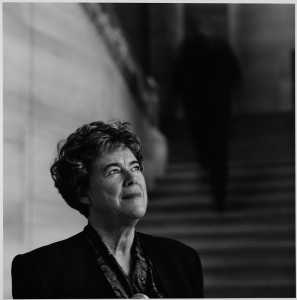 CITLALLY MACIEL
CITLALLY MACIEL
<Staff Writer>
As a law student, is there a case that you passionately like or dislike? Is there a case that stuck on you because you found it interesting, compelling, unjust or just plain boring? Is there a particular legal figure that you have come to admire or that you absolutely detest? Lord Denning anyone (hate/love)? Personally, R. v Ewanchuk is a case that, for a number of reasons, made a huge impression on me. Indeed, I can talk about this case until I make your ears bleed. For the purposes of this article, I will spare readers. I will nonetheless express one important thing: it was R. v Ewanchuk that prompted my respect and admiration for Madame Justice L’Heureux-Dubé. Accordingly, I was thrilled to find out about her visit to Osgoode. Apparently, I was not the only one. Dean Sossin mentioned to her that when he announced her visit “there was an audible gasp in the room.” If you were unable to attend, you definitely missed out on one of the best speakers of the year. But not to worry, here is a recap.
Escorted by Dean Sossin, a lively Madame Justice L’Heureux-Dubé arrived to the Moot Court. Although I had seen pictures of her before, her appearance looked softer and kinder in real life. As both sat down, Dean Sossin proceeded to introduce her to the crowd. He had not concluded this formality, when she was already making the audience laugh. Indeed, the remainder of the talk was characterized by jokes, laughter, and cheerfulness. Her sense of humor was indeed refreshing. But aside from her cheerful attitude, there was also an element of modesty in her demeanor. When talking about her work, her accounts were completely unpretentious and nonchalant. It almost seemed like she felt that she had not accomplished much, but had only met expectations. Anyone who takes a look at her credentials and is familiar with her work would think that either her standards are too high or that she is just too modest. She could be both except that, in reality, her outlook is very likely to reflect a solid sense of duty. During the talk, she stated that her inspiration in life was her mother, who she described as a very bright, intelligent and talented woman. Indeed, it was her mother, a housewife, who pushed the young woman to become a lawyer and work towards bringing gender inequality to an end. Conceivably, witnessing her mother’s inability to exploit her talents and intelligence drove Madame Justice L’Heureux-Dubé to become the woman she is today.
Dean Sossin asked her to speak about her experience after graduating from law school at the University of Laval in 1951. She said that she never paid attention to gender-based discrimination. When the registrar of the law school told her that “women do not go there,” the aspiring law student (as she then was) responded: “Is there a rule or something? No? Well, I go there!” However, she said that the reality of the times was that the only law firms that would hire female lawyers were the small firms run by minorities. Evidently, she was never inhibited by this situation. Not only did she overcome these barriers, but her work has helped other women overcome their own barriers. In effect, when asked to speak of the decisions she was most proud of, Madame Justice L’Heureux-Dubé said that the case Moge v Moge was one of them because it sent the message that the work of women at home was an important contribution. Interestingly, in her opinion, the reason why a decision like this one had not been made before was not a simple matter of gender discrimination. The reason why judges had been unable to rule in this manner was because “to render justice, you have to walk in the shoes of the people.” To this effect, she also said that this is the reason why she has incorporated the social sciences in her work: to be able to understand society and its needs.
In fact, the decisions of Justice L’Heureux-Dubé were characteristically long because, aside from her meticulous analysis of the law and the facts, she would use social science studies in order to determine what the best outcome was for the particular case and for society. Her decisions are also famous because many of them were dissents. Dean Sossin asked whether writing dissents had given her the freedom to write more honestly. She responded that “dissents are the voice of the future.” Although unanimous decisions made the legal system stable, societies never remain stable, “they are always evolving.”
In R v Ewanchuk, although she agreed with the majority, Justice L’Heureux-Dubé elected to supplement her decision with some of her own thoughts. In the end, what she created was a manifesto. True to form, she substantiated her opinion by incorporating robust evidence generated by the social sciences. In addition, she took it upon herself to denounce the preconceptions of her peers, especially Alberta Court of Appeal Justice John McClung, stating that: “[c]omplainants should be able to rely on a system free from myths and stereotypes, and on a judiciary whose impartiality is not compromised by these biased assumptions.” Despite the common sense of her opinion, her remarks created a commotion within the legal community and the public in general. She was accused of using her position to push her own feminist agenda and of bullying Justice McClung.
I doubt this incident had any inhibiting effect on Justice L’Hereux-Dubé. Her work continued to show an admirable level of integrity and a clear determination to be just. She is truly inspirational. To conclude, I will leave you with one piece of advice she gave the audience. “Don’t work for money; work for justice. You’ll get money anyways.”
